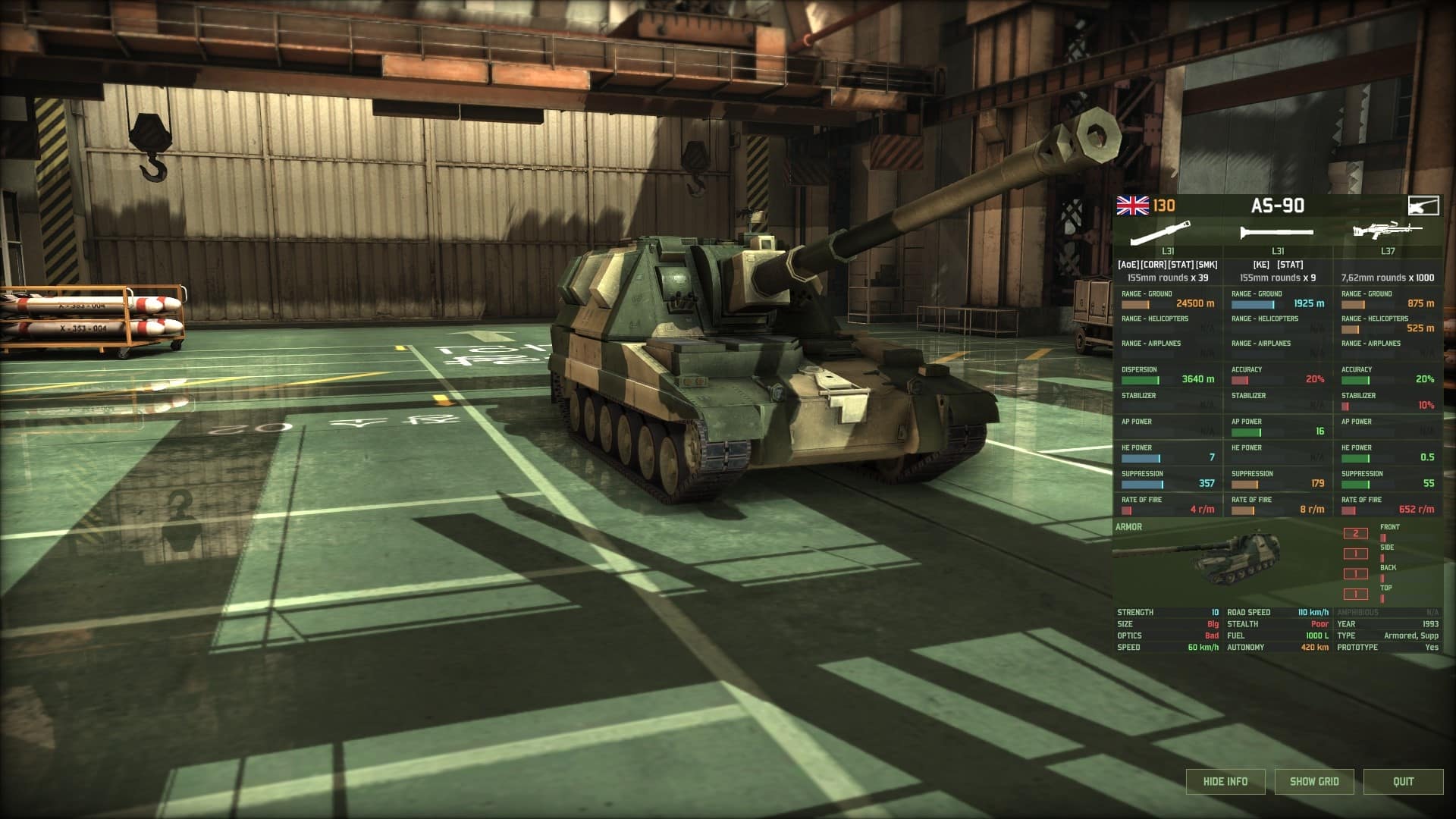
There is no size restriction, but keep in mind that even if you have 2 squads of infantry with only one man left, only one of those can enter an empty transport. To load infantry back into transports, just select your infantry and right click on the transport. The unload button is only available to transports that have infantry in them. You can also turn your weapon off one by one by just clicking on them. When it comes to the button “Stop” keep in mind that it only stops the unit from moving, but not from firing at enemy units. The rest of the buttons should be straight forward. I will get deeper into the role of movement in respects of armour in part 5 of this series. “Attack Move” also does not utilize road speed either. If the target is dead, out of range or out of sight, your unit will continue moving to the initial destination. The small but important difference is that whenever an enemy unit is in sight and you are able to shoot at it, your unit will stop moving and do exactly that – shoot at it. It works just like the other 2 that you click it and then click where you want your unit to move. The next and just as important button is “Attack Move”. This movement does not utilize road speed. This is important if you want to retreat since every armoured vehicle has the highest amount of armour on the front. If you click that button and then on a point on the map, your vehicle will move backwards to that point. Also, if you tell a unit that is currently on a street to move somewhere via right click, it will never utilize the road speed even if it technically drives on the road the whole time.Īnother important button is “Reverse”.

If you move your unit via normal right click, it will get there using the shortest, most direct route. When you click on the fast move button and then to a destination your unit will try to get there the fastest way and will utilize roads if there are any on the way. Note that in nearly every case the difference between road and normal speed is quite big.

First the road speed, which is standardised into 110 and 150 km/h and then the normal speed which is based on the speed the vehicle is or was able to reach in reality.

In Wargame however, every ground vehicle has two types of speeds. In most other games you tell your units to move simply by right clicking to the destination where you want them to move to.
Wargame red dragon command units series#
It is also the most important thing to learn which is why I decided to start the series with this part. A big difference to many other strategy games is the different control of units, especially ground units. But enough of me stroking my ♥♥♥♥, let’s get into the tutorial.Ĭontrols and Basics. I felt there too many so called tutorials with either false or outdated information and while the game is already 2 years old, it will still get supported for quite a while so I decided to do another, hopefully better, tutorial. Currently I am Rank 3 and 5 on the ranked leaderboard and had quite some success in recent tournaments.

There will be at least 9 tutorial parts – more may come later – if you only want to read the parts about specific topics, every part has its own title.īefore we get into it, very shortly something about me, so you know that I am not just a scrub trying to sell my lies as facts.
Wargame red dragon command units free#
If you see typos and the such, feel free to point them out so I can correct them.Īnd here is a Red Dragon Glossary, if you should ever be confused about some commonly used terms: Part 1.1: Controls and Basics Important information: What you will read now is the script for the video tutorial I did, do not be surprised if some formulations are a bit weird or if there are typos / grammar mistakes leftover in there, I only decided to make this public after most of it was finished. Extensive Wargame: Red Dragon Tutorial Text Version An up to date, relatively short text guide which are the basis for tutorial videos (also included), made by a pretty good player, me.


 0 kommentar(er)
0 kommentar(er)
